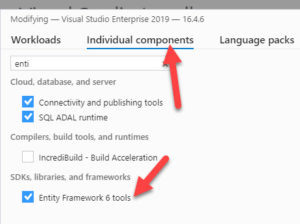In the “hey, you cant know everything” category….
A client asked me a question today about mapping TimeSpan to the Time data type in SQL Server.
I didn’t know there was a Time data type in SQL Server. I’m well aware of the Date data type we got in SS2008, but I skipped right past that other new type.
Since I never worked with a Time data type, I never had occasion to use it with EF. So when my client said something about timespan, I thought “that can’t be right”. Timespan is about intervals, not a point in time. Then he said something about the DateTime.TimeOfDay property which returns a timespan and I was all
So….
step 1:create a table in a SQL Server Database that has a Date field and a Time field.
step 2: reverse engineer to code first (I used the EF6 designer)
public partial class SeparatedDateTime { public int Id { get; set; } [StringLength(50)] public string somestring { get; set; } [Column(TypeName = "date")] public DateTime justDate { get; set; } public TimeSpan justTime { get; set; } }
ok so there it is: TimeSpan
step 3: write some code to test it out:
private static void InsertSeparatedDateTime() { using (var context = new DateTimeTester()) { context.SeparatedDateTimes.Add(CreateSepDT()); context.Database.Log = Console.WriteLine; context.SaveChanges(); } } private static SeparatedDateTime CreateSepDT() { var sepDT = new SeparatedDateTime(); sepDT.somestring = "A Test"; sepDT.justDate = DateTime.Now.Date; sepDT.justTime = DateTime.Now.TimeOfDay; return sepDT; }
step 4: debug.
check sepDT.justTime value and it looks like this : it is the milliseconds since midnight in many flavors
The log shows me that EF has transformed that value into a time value for the insert:
And surely it does the opposite when reading that data back out of the database.
Some caveats:
-
24 hr time only
-
Presumes you calculated that timespan value correctly
-
All caveats associated with UTC























